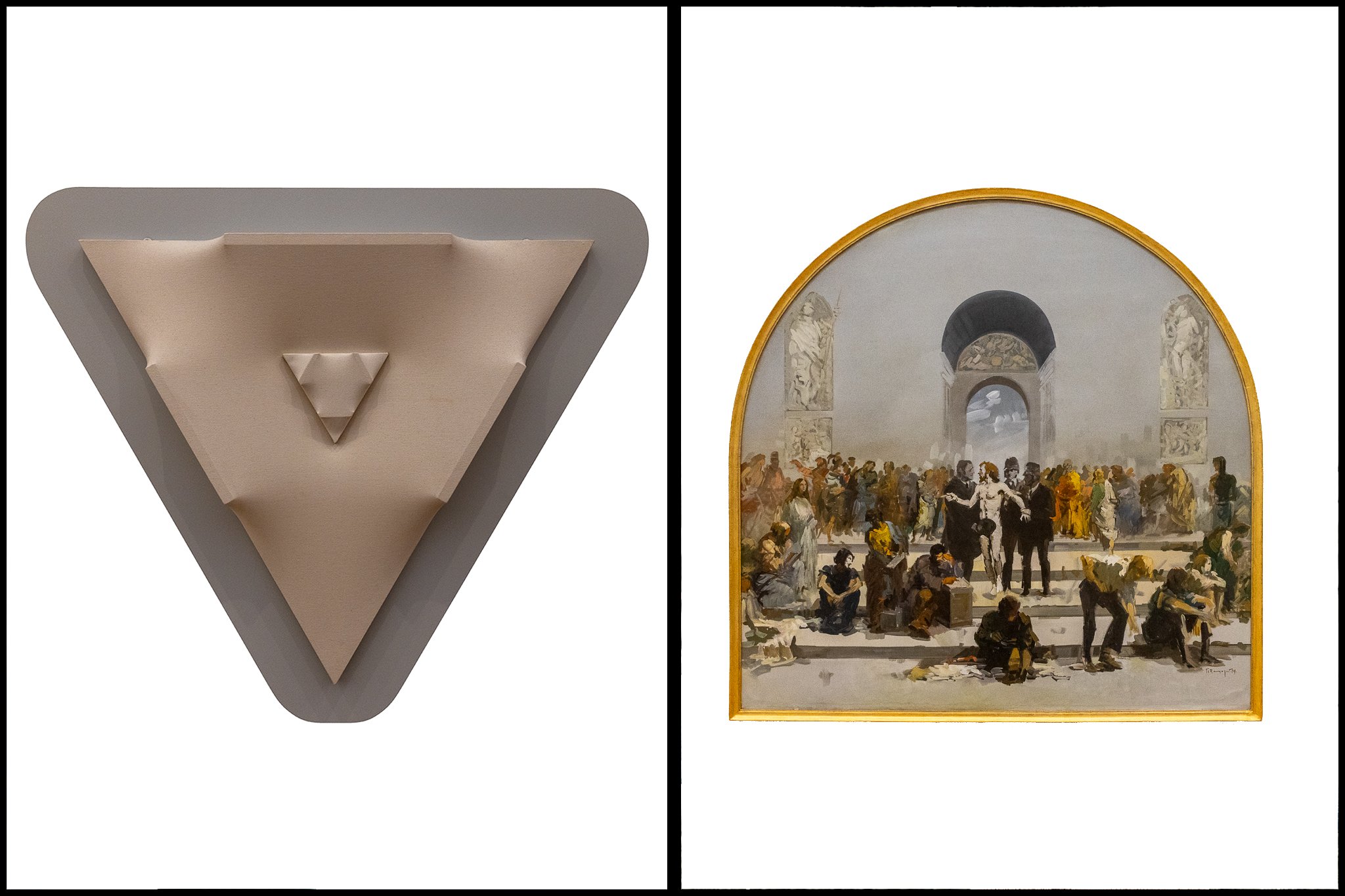Visiting National Gallery - Alexandros Soutsos Museum
Back in January, my wife and I visited the National Gallery in Athens.
It's a relatively short walk from our home. The day was a Sunday and it was so beautiful. (All Sundays are beautiful in Greece.)
Varotsos Costas (1955) ,Spiral, Glass, iron | Zongolopoulos Giorgos (1903 - 2004), Umbrellas, Stainless metal
We walked briskly to the renovated building of the National Gallery and walked in, ready to be mesmerized by its treasures. And we were truly enchanted.
Tetsis Panayiotis (1925 - 2016)
Street Market
Oil on canvas
The last time I had been there was several years ago, when the building was still old and dysfunctional, and certainly before the famous Picasso theft.
I think the new building is in itself a famous reason to visit. Bright, simple, it exudes an understated grandeur without stealing the visitor's attention from the masterpieces it houses within. Beautiful, spacious rooms, large open spaces, a lovely café and conversation with the city blend harmoniously into a wonderful experience of visiting a place full of art.
Acropolis rock, as seen from the National Gallery
There are many paintings we admired and some we didn't even know were part of the National Gallery's collection. For me, visiting a museum is such a unique and fulfilling experience that I have no hesitation in saying that photography and video fail to even remotely represent it (not that this means, of course, that I won't try). For what it's worth, however, I think that, surprisingly, a properly curated catalogue in print might do a better job of conveying the museum experience.
One of the many surprises of the Gallery was the painting called "The Virgin Mary" by the painter Doxaras Panagiotis (1662 - 1729). Our late mother had a very poor copy of the painting hanging in our old house and for over 35 years I had not known any information about it - until now! I don't know why mother had chosen this copy to adorn our house, the only piece of art I remember from my childhood, but I assume it had something to do with its religious theme. What a great discovery.
Doxaras Panagiotis (1662 - 1729), The Virgin Mary, Oil on canvas | Theotokopoulos Domenicos (El Greco) (1541 - 1614), St. Peter, Oil on canvas
Hidden in an inaccessible but visible corner was Picasso's painting "Woman's Head" (after he managed to return, after his many adventures). The painting had been donated by Picasso himself to the Greek people, as a tribute to his brave resistance during the Nazi occupation. It is a portrait of the photographer Dora Maar (1907 - 1997), Picasso's companion during the period 1936-1943. On 09 January 2012, a man managed to steal it (along with another painting by Mondrian) and it was eventually found again in 2021. Another grotesque moment occurred during the press conference for the presentation of the lost works of art, when the Picasso painting...fell and the employee picked it up from underneath with his bare hands.
Picasso Pablo (1881 - 1973), Woman’s Head, Oil on canvas | Paralis Giorgos (1908 - 1975), Barbara’s Sink, Oil on canvas
Finally, I must mention the brilliant curation of the temporary exhibition entitled "Urbanography", where we saw, among others, works by probably my favourite Greek photographer ever, Mr Dimitris Harisiadis. The man has been a poet with a camera. I adore him.
Dimitris Harissiadis (1911-1993), Dancing to the bouzouki of Giannis Papaioannou, Inkjet print | Dimitris Harissiadis (1911-1993), Visitors to the Acropolis, Inkjet print
My wife resting inside the Gallery | Myself, happy in front of the tree
Life would be great if we could just go to a different museum every day.
THE AIM OF ART IS TO REPRESENT NOT THE OUTWARD APPEARANCE OF THINGS, BUT THEIR INWARD SIGNIFICANCE | ARISTOTLE





























